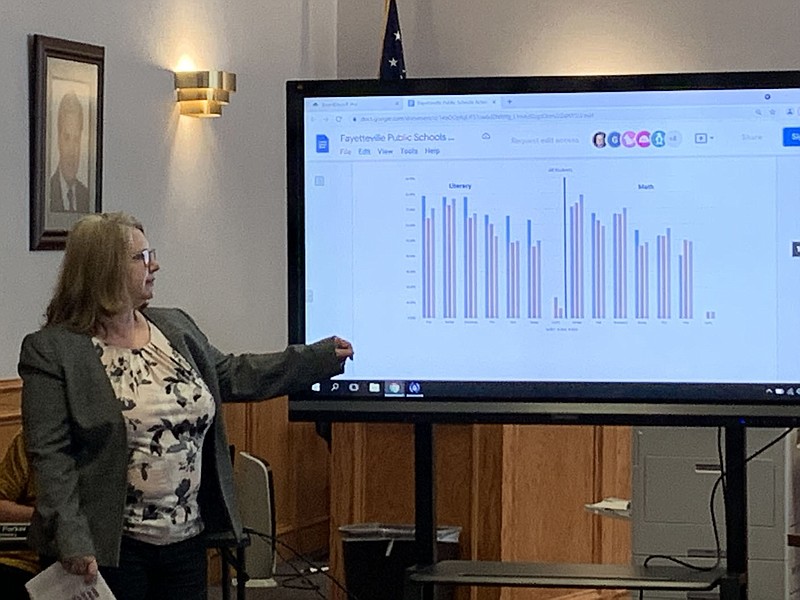FAYETTEVILLE -- The School District's Black and Hispanic students score lower in literacy and math than their white peers, an issue administrators said they're working to address.
The School Board held a workshop Monday to discuss steps the district is taking to help all students grow and achieve at the same level.
A wide disparity in growth scores was recorded between white students and their Black and Hispanic peers from 2017-19 at some district schools, said Kelli Dougan, assessment, research and accountability director.
"This is something we've been monitoring for a while," Dougan said, noting the pandemic accelerated student needs. "The kids who were at risk were even more at risk."
The district is addressing growth for students of color across the district, with Asbell, Butterfield, Leverett, Owl Creek and Washington elementary schools and Ramay Junior High School being of particular concern based on ACT Aspire scores, she said.
Student growth is determined by the Arkansas Department of Education and is measured by comparing ACT Aspire test scores, according to district documents. Arkansas' ACT testing was canceled last year due to the covid-19 pandemic, and information from this year's tests isn't available, Dougan said.
An ACT growth score of 80 is considered equal to one year's worth of growth, Dougan said.
Owl Creek's white students received average literacy scores of 80, while Black and Hispanic students averaged about 78 in 2019, according to documents.
White students at Ramay likewise averaged about 81 in math while Black students scored about 77 and Hispanic students scored about 76 that same year, according to supporting documents.
The district formed a Disproportionality Committee comprising district administrators and stakeholders in November to address unequal growth trends in the schools, Dougan said. The committee has recommended a plan for more equitable learning in challenged schools, she said.
In addition to district-wide professional development in August, the Asbell, Butterfield, Leverett, Owl Creek, Washington and Ramay staff will be trained in culturally responsive pedagogy and data analysis to inform future instructional practices, Dougan said. The six schools also will meet monthly with the Disproportionality Committee, she said.
"I want everyone to have as much training as they're willing to absorb," said Megan Hurley, board vice president.
Data collection on learning growth also will be implemented at all district schools so expansive information toward interventions can be gathered for all students, according to district documents.
"We really need to dig down to individual classrooms," said Superintendent John L Colbert, adding teachers and administrators will all be held accountable for closing learning gaps.
Students will begin feeling the impacts of the district's efforts toward more uniform growth the first week of the 2021-22 school year, Dougan said.
"We have target lists of students that are already set up," she said.
Overcoming the pandemic and existing learning growth gaps will be a monumental challenge, said Tim Hudson, board member. Coaching, support and learning from district peers is more important now than ever, he said.
"When you know better, you have to do better," Hurley said, noting the district must continue to adjust priorities to meet student needs.
More News
Fayetteville Public Schools Demographics
American Indian: 1%
Asian: 4%
Black: 10%
Pacific Islander: 2%
Hispanic: 12%
White: 68%
Two or More Races: 6%
Source: Fayetteville Public Schools
